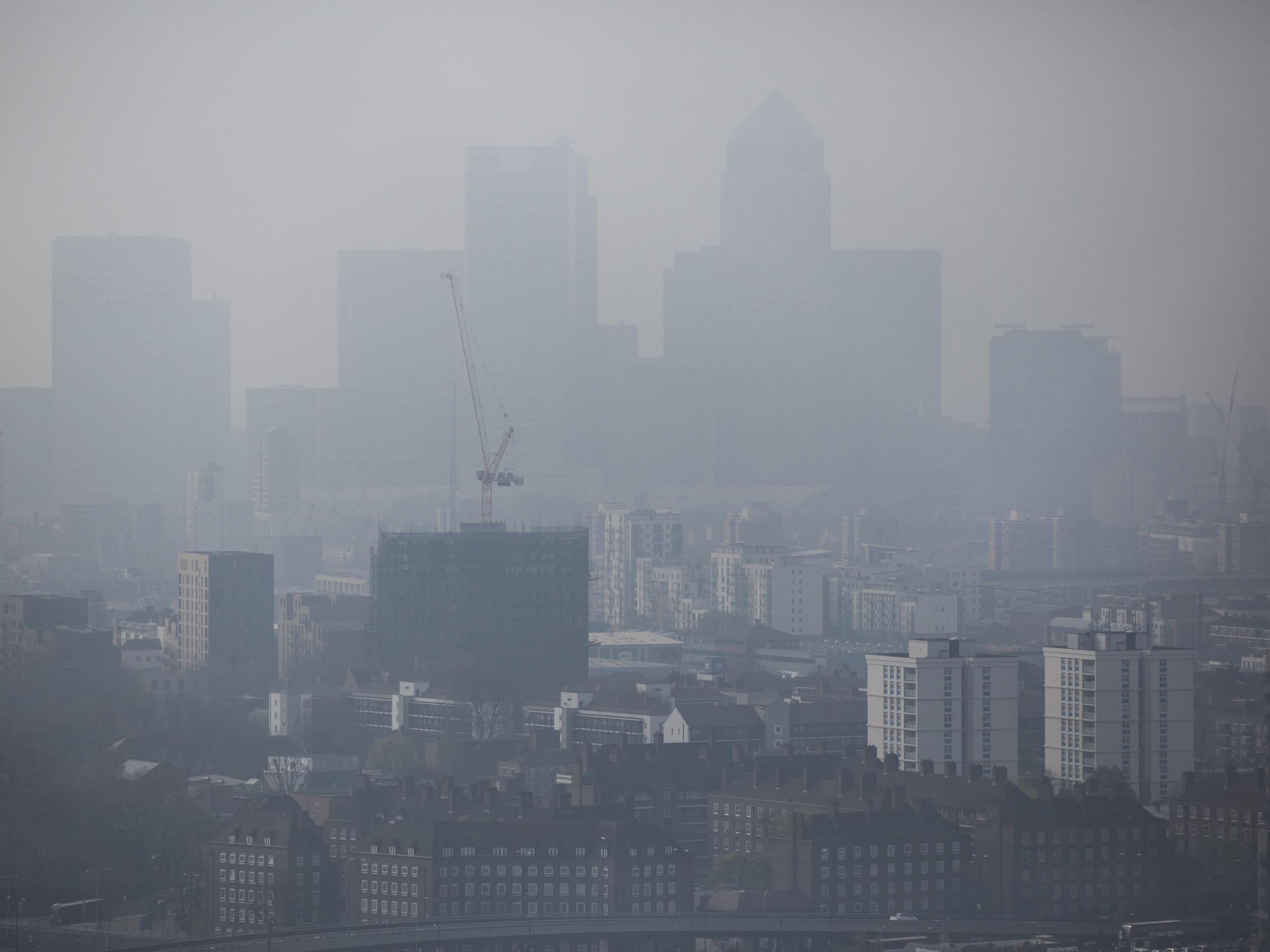One of London's busiest roads hits annual pollution limit with 335 days left of 2018
News comes on the day Government minister attends emergency meeting in Brussels about UK breaking limits

London has reached its annual air pollution limit just one month into the year, for the eighth year in a row.
Under EU rules, any single location in the UK can only break the hourly air pollution limit 18 times in a year, and Brixton Road in Lambeth reached that mark on Tuesday morning.
It is expected to breach the limit either later on Tuesday or on Wednesday morning.
Levels of toxic nitrogen dioxide pollution in the UK have broken legal limits every year since 2010.
“This event is now an annual spectacle highlighting Government’s abject failure to tackle the toxic air cloaking our towns and cities,” said Mel Evans, clean air campaigner at Greenpeace.
The news came on the day junior minister Thérèse Coffey attended a meeting in Brussels in the place of Environment Secretary Michael Gove to hear about the UK’s failure to meet air pollution targets.
In the emergency meeting, called by EU environment commissioner Karmenu Vella, the UK and eight other high-polluting countries were given a “last opportunity” to address air cleanliness.
“Thérèse Coffey has a lot of explaining to do at today’s meeting, facing questions on air pollution breaches on the very day the UK air is about to hit illegal levels,” said Ms Evans.
In previous years the air pollution limit has been broken much earlier, generally in the first few days of January.
The delay this year could be a result of weather conditions, which affect levels of pollution in the air, or it could be the result of London Mayor Sadiq Khan’s efforts to tackle pollution in the city.
Cleaner buses on polluted routes and charges on high-polluting vehicles have both been introduced in London to bring toxicity levels down.
“The frequency and severity of these pollution spikes shows we’ve still got a long way to go in cleaning up our air, despite some good initiatives by the Mayor,” said Oliver Hayes, campaigner for clean air at Friends of the Earth.
“Tougher action is needed to protect more Londoners, sooner. The Mayor should beef up the planned ultra-low emissions zone to include all vehicles in an enlarged zone so it protects people throughout the capital, not just inner London. Road-building schemes like the Silvertown Tunnel must be scrapped.”
Campaigners said there was also a need for Government action to address air pollution throughout the country, taking a cue from London’s efforts.
Though air pollution is worst in London, 37 of the UK’s 43 air quality zones exceed EU nitrogen dioxide limits.
Diesel vehicles are responsible for 90 per cent of toxic nitrogen oxides coming from roads, and the Government has confirmed that all petrol and diesel cars will be banned in 2040.
However, there are no plans for more clean air zones, which charge high polluting vehicles to enter the most polluted areas.
“The Government could make a real difference very quickly by replicating London’s evidence-led approach across the country, and yet it still advocates clean air zones only as a last resort,” said Ms Evans.
“Funding should be made available for local authorities to put clean air zones in place now, and the UK’s phase-out date for diesel and petrol cars should be 2030, not 2040.”
A spokesperson from the Department for Environment, Food & Rural Affairs (Defra) pointed out that the Brixton Road data is collected by King’s College London, and that none of the London sites monitored by the Defra air quality network have breached limits yet this year.
“Air pollution has improved significantly since 2010, but we recognise there is more to do which is why we have put in place a £3.5bn plan to improve air quality and reduce harmful emissions," they said.
“The Mayor of London has also received a comprehensive funding settlement from the government, worth more than £5bn, which includes measures to deliver compliance with air quality limits.”
Join our commenting forum
Join thought-provoking conversations, follow other Independent readers and see their replies
Comments